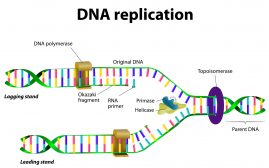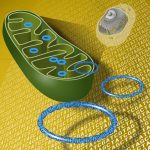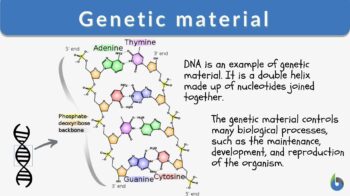
Genetic material
n., [d͡ʒəˈnɛtɪk məˈtɪɹi.əl]
Definition: a fragment, a molecule, or a group of DNA (or RNA)
Table of Contents
Genetic Material Definition
What is genetic material? Genetic material is the hereditary substance in the cell. It carries all information specific to an organism. It is known as DNA (deoxyribonucleic acid) or RNA (ribonucleic acid). Where is genetic material found? The cytoplasm of prokaryotes such as bacteria contains DNA. In eukaryotes such as plants and animals, DNA is found in the nucleus of the cell (nuclear DNA) and to a lesser extent in the extranuclear sites, such as mitochondria (containing mtDNA) and chloroplast (containing cpDNA).
mRNA is involved in protein synthesis, but how? Our Expert explains: What does mRNA do in protein synthesis? Join our Forum and hear more from our experts.
The genetic material controls the organism’s composition and it is identical in the somatic cells of a multicellular organism. The genetic material has the ability to replicate with the cell so new cells contain the same genetic material as the parent cell.
There are genetic materials found in the form of plasmids. The plasmids are genetic material found outside the chromosomes of certain bacteria. They are discrete, circular, supercoiled, and much smaller than chromosomal genetic information. Plasmids usually contain information encoding for non-essential traits such as antibiotic resistance and toxins production. Plasmids can replicate independently from the cell. Conjugative plasmids can be transferred among bacteria leading to the appearance of new features in the recipient bacterial cell.
How to define genetic material? A genetic material would contain a gene, a part or group of genes, or even the entire genome. What are the three types of genetic material? DNA, RNA, and genes are the three types of genetic material.
During reproduction, the genetic information is passed from one generation to another. It may be through sexual or asexual means. In asexual reproduction, the “clone” receives genetic information that is identical to its parent. Conversely, in sexual reproduction, the “offspring” receives genetic material from its father and its mother. Hence, the genetic material of the offspring is not an identical copy of its parents.
Genetic material structure
Scientists studied the structure and function of the genetic material and found that the genetic material is located in the chromosomes. Because chromosomes contain proteins and DNA so it was not clear early on whether the proteins or the DNA carried the genetic information. Hershey and Chase’s experiments proved that DNA, not proteins, was the genetic material since proteins lack the most important character of the genetic material, which is replication.
In a human cell, the genetic material is present in the form of double-stranded DNA molecules, forming the shape of a double helix. It is made up of a sequence of nucleotides forming two DNA strands.
During replication of the cell, the two strands separate, and eventually, two new DNA molecules are formed. The newly replicated DNA molecule is identical to the original DNA molecule.
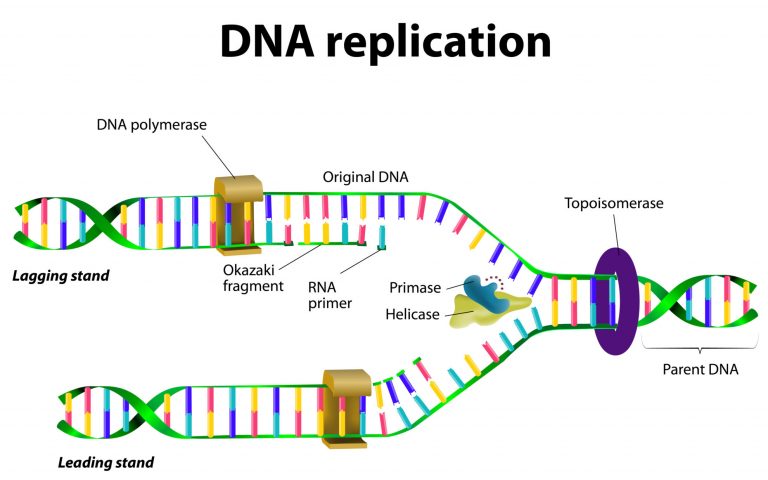
READ: DNA Structure & DNA Replication – (Tutorial)
DNA is composed of different combinations of four nucleotides:
- guanine (G)
- cytosine (C)
- adenine (A)
- and thymine (T)
where C is paired with G and A is paired with T on the opposite strand forming a base.
The base is attached to a phosphate molecule and a ribose sugar forming a nucleotide.
DNA in humans is found in the form of chromosome linear strands in the nucleus. In contrast, it is present in the form of a single genophore in bacteria. Structural proteins are associated with the chromosomal DNA forming chromatins that compact, organize, and control the accessibility to DNA strands.
Chromatins in eukaryotes are usually composed of nucleosomes with DNA segments wound around histone proteins. Genome is the complete set of genetic material in an organism.
RNA is the genetic material of some viruses. It is composed of a single strand containing a phosphate group, sugar, and nucleotides. Moreover, the bases in the RNA strand are as follows:
- guanine (G)
- cytosine (C)
- adenine (A)
- uracil (U)
where thymine in DNA is replaced by uracil in RNA. base pairs of RNA are similar to that of DNA except that adenine is paired with uracil.
Question: “Where is mRNA synthesized?” Answer: mRNA is synthesized in the nucleus of the cell where DNA is located. More FAQ answered here: What does mRNA do in protein synthesis? Join our Forum now!
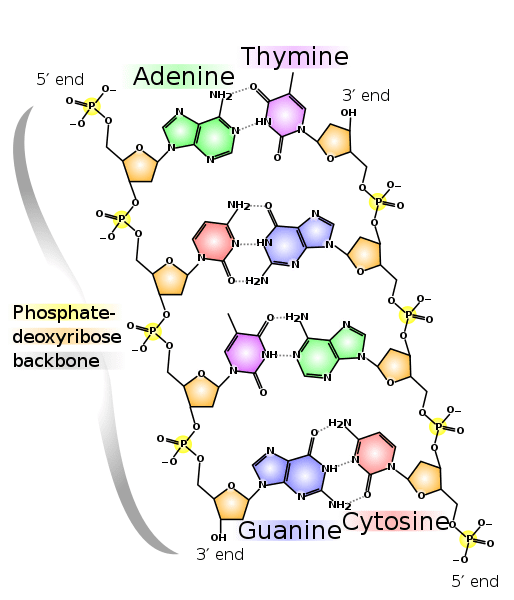
Genetic Material Function
The genetic material is extremely important since it keeps all information about the organism. The variety of genetic composition between individuals is a result of differences in the sequence and order of the bases forming DNA.
DNA strands of genetic material are highly condensed and organized in the cell to keep the genetic material safe. however, it should be available to the cell to be used as a template for various biochemical reactions such as protein synthesis.
To synthesize proteins, the cell uses the DNA strand as a guide as DNA is used to create a messenger RNA, which is complementary to one of the DNA strands.
The messenger RNA is then translated by ribosomal RNA to create proteins from various amino acids. The sequence of amino acids is called the genetic code.
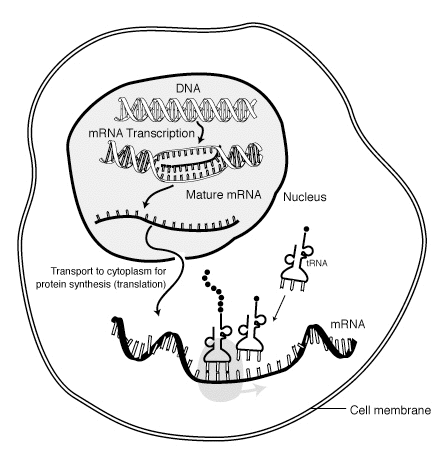
Got questions about the role of the genetic material in protein synthesis? Let’s talk about them here: What does mRNA do in protein synthesis? Join our Forum now!
What are the characteristics of genetic material?
The genetic material is found in every cell. It stores all information about the organism. It varies among different organisms. It controls different functions in the cell, controls the replication of its cell, and the formation of new cells. It also accounts for the variation of organisms.
The hereditary material present in all cells is DNA. It is passed from one generation to another through genes. Genetic information links previous generations to an individual. Individual characteristics such as hair and skin color are carried on genes together with other invisible or recessive characters.
Some genetic changes (mutations) might affect the genetic material of an individual and may well be passed on to the next generation. Other changes might not affect the genetic material and consequently do not pass to their offspring. The DNA sequence is now being used to provide novel therapies for complicated genetic diseases.
Try to answer the quiz below to check what you have learned so far about genetic material.
References
- Alberts, B., Johnson, A., Lewis, J., Raff, M., Roberts, K., & Walter, P. (2002). Cell junctions. In Molecular Biology of the Cell. 4th edition. Garland Science.
- Baron, S., Fons, M., & Albrecht, T. (1996). Genetics. Medical Microbiology. 4th edition.
- Encyclopædia Britannica, inc. (n.d.). DNA: The genetic material. Encyclopædia Britannica. https://www.britannica.com/science/cell-biology/DNA-the-genetic-material.
- Genetic material. ScienceDirect Topics. (n.d.). https://www.sciencedirect.com/topics/mathematics/genetic-material.
- Genetic Material: Definition, Structure & Function. Study.com. Earn College Credit. Research Schools, Degrees & Careers. (n.d.). https://study.com/academy/lesson/genetic-material-definition-structure-function.html.
- Libretexts. (2021, March 6). 4.2: DNA, the genetic material. Biology LibreTexts. https://bio.libretexts.org/Bookshelves/Introductory_and_General_Biology/Book%3A_Introductory_Biology_(CK-12)/04%3A_Molecular_Biology/4.02%3A_DNA_the_Genetic_Material.
©BiologyOnline.com. Content provided and moderated by Biology Online Editors.

